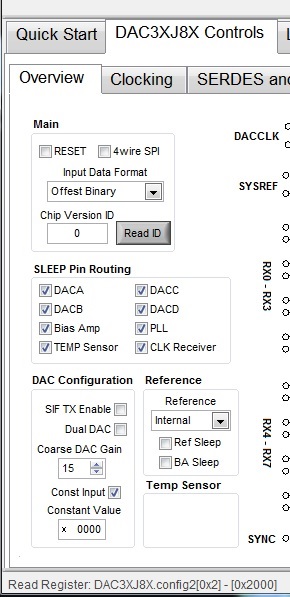Hello
I would like to use the DAC38J84 in the following setup:
DACCLK=1920MHz
LMF=244
DACA and DACB will generate IQ complex modulated BW of +/-20MHz placed around 360MHz generated by NCO
DACC and DACD will generate IQ complex CW between 250 to 650MHz using the NCO by SPI
The required data rate should be 240MSPS,
Now for the questions:
1. Is this setup applicable?
2. How do I know what is the required serdes rate?
3. Can I generate this setup in the EVM?
4. What is the maximal rate of the NCO frequency change using SPI?
5. Is there a VHDL/Verilog block of the DAC?
Thanks


